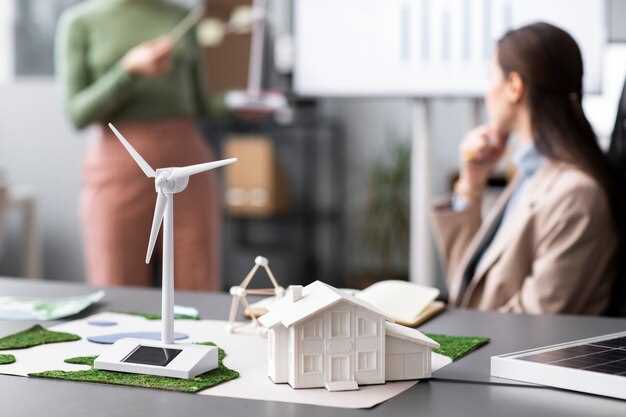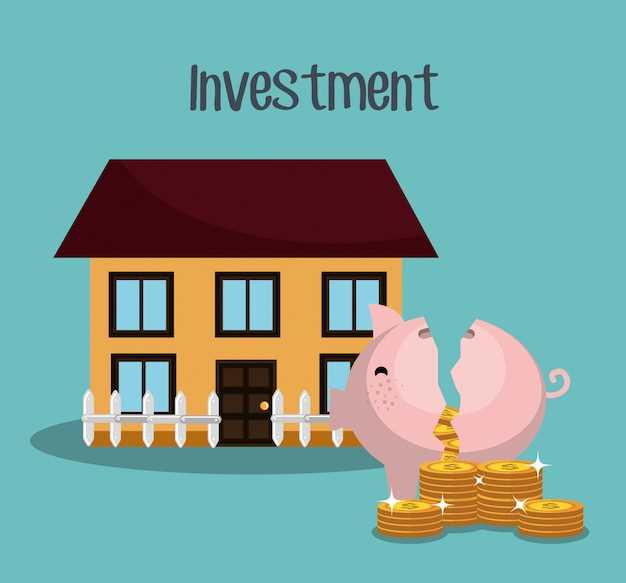If you’re considering purchasing or building a home, prioritize sustainability by opting for eco-friendly features and materials. Integrating solar panels not only reduces your carbon footprint but can significantly lower energy bills. Homes with solar energy systems can save homeowners an average of $20,000 over 20 years. Consider also the installation of energy-efficient appliances, which can cut consumption by up to 30%, enhancing both savings and comfort.
Focus on green building practices that utilize sustainable materials. Bamboo flooring, for instance, is not only stylish but is one of the most renewable resources available, maturing in as little as three to five years compared to traditional hardwood. Recycled steel and reclaimed wood can also help minimize waste while providing unique character to your home.
Prioritize energy efficiency when planning your design. A well-insulated home made from eco-friendly materials will keep temperatures stable, reducing the need for heating and cooling. Incorporating natural ventilation and utilizing passive solar design can increase comfort while further decreasing energy usage. These strategies create a harmonious and enjoyable living environment.
Lastly, consider investing in green certifications for your home. Programs like LEED (Leadership in Energy and Environmental Design) not only recognize sustainable building practices but can also enhance property value. Research shows homes with green certifications often sell for up to 9% more than their conventional counterparts, making sustainability not just a choice for the planet but a smart financial decision as well.
Choosing Eco-Friendly Building Materials for Sustainable Homes

Select renewable materials like bamboo and reclaimed wood for your construction. Bamboo grows quickly and absorbs carbon dioxide, making it an excellent choice for flooring and cabinets. Reclaimed wood offers a rustic aesthetic and prevents deforestation, while also reducing waste.
Prioritize Low-VOC Products
Opt for paints, adhesives, and finishes labeled as low-VOC (volatile organic compounds). These materials are less harmful to indoor air quality and contribute to a healthier living environment. Many manufacturers now produce eco-friendly alternatives without compromising on performance.
Consider Recycled Materials
Incorporate recycled materials such as glass, metal, and concrete into your home design. Recycled glass countertops and tiles add style while minimizing waste. Metal roofing made from recycled content is durable and energy-efficient, further enhancing sustainability.
Choose insulation made from natural fibers like sheep’s wool, cotton, or cellulose. These options are biodegradable and often outperform traditional insulation in thermal performance. Pay attention to the lifecycle of materials to ensure longevity and minimal environmental impact.
Evaluate the sustainability certifications of products. Look for labels like LEED or FSC (Forest Stewardship Council) to ensure you’re selecting materials that adhere to eco-friendly standards. Investing in eco-friendly materials not only benefits the environment but can also enhance the value and livability of your home.
Key Features of Energy-Saving Homes in Sustainable Development

Focus on high-quality insulation to minimize energy loss. Utilize materials like spray foam, fiberglass, or cellulose to achieve superior thermal resistance. Ensure walls, roofs, and floors are well insulated to maintain comfortable indoor temperatures year-round.
Incorporate energy-efficient windows. Opt for double-glazed or triple-glazed options with low-emissivity coatings to reduce heat transfer. Choose window styles that maximize natural light while minimizing heat gain or loss.
Renewable Energy Integration
Install solar panels to harness renewable energy. Aim for a photovoltaic system that meets a substantial portion of your energy needs, thus lowering dependence on fossil fuels. Consider incorporating solar water heating systems to further reduce energy consumption.
Utilize geothermal heating and cooling systems. These systems draw from the Earth’s stable temperatures to regulate indoor climates efficiently. They offer long-term savings on energy bills and reduce environmental impact.
Smart Home Technology
Implement smart thermostats that learn your schedule and preferences, adjusting temperatures for optimal comfort and efficiency. Consider smart lighting systems that use sensors and timers to minimize energy use when spaces are unoccupied.
Use energy-monitoring devices to track consumption patterns. This information helps identify high-usage areas and promote energy-saving behaviors throughout the home.
Principles of Green Building: A Practical Approach
Focus on energy efficiency. Use high-performance insulation materials to reduce heating and cooling needs. A well-insulated home can minimize energy consumption by up to 30%. Incorporate energy-efficient windows that maximize natural light while reducing heat loss.
Choose sustainable materials. Opt for recycled, reclaimed, or rapidly renewable resources. Bamboo flooring and recycled metal roofing are excellent choices. A sustainable materials plan can significantly lower the carbon footprint and enhance indoor air quality.
Implement water conservation methods. Install low-flow fixtures and rainwater harvesting systems. These measures can reduce water usage by up to 50%. Consider xeriscaping for landscaping, which uses drought-resistant plants to minimize irrigation needs.
Prioritize indoor air quality. Utilize low-VOC paints and materials to limit harmful emissions. Ensure proper ventilation with energy recovery ventilators to enhance air circulation while maintaining energy efficiency.
Incorporate renewable energy sources. Solar panels and wind turbines can provide clean energy, offsetting reliance on fossil fuels. A home equipped with renewable technology can generate significant energy savings over its lifespan.
Adopt smart building technologies. Utilize smart thermostats and energy management systems. These tools optimize energy use by adapting to occupants’ behavior, which can lead to reduced utility bills and increased comfort.
| Principle | Description | Impact |
|---|---|---|
| Energy Efficiency | High-performance insulation and windows | Reduces energy consumption by up to 30% |
| Sustainable Materials | Use of recycled and renewable resources | Lowers carbon footprint |
| Water Conservation | Low-flow fixtures and rainwater systems | Cuts water use by up to 50% |
| Indoor Air Quality | Low-VOC products and ventilation systems | Improves health and comfort |
| Renewable Energy | Solar panels and wind turbines | Reduces energy costs and reliance on fossil fuels |
| Smart Technologies | Smart thermostats and energy management | Optimizes energy use |
Regularly evaluate the building’s performance. Conduct energy audits and assess water usage to identify areas for improvement. Continuing to refine these practices ensures an ongoing commitment to sustainability. Engage with professionals for assessments and updates to remain aligned with best practices.
Incorporating Renewable Energy Sources in Residential Design
Integrate solar panels into your home design to harness sunlight for electricity generation. Position them on south-facing roofs to maximize exposure. Consider including energy storage solutions like batteries to ensure power availability during cloudy days or at night.
Wind Energy Utilization
Add small wind turbines if your location supports consistent wind flows. These can further reduce reliance on grid electricity and lower energy costs. Ensure zoning regulations allow for turbine installation before proceeding.
- Evaluate wind patterns and average speeds.
- Choose a turbine that fits the scale of your home and energy needs.
Geothermal Heating and Cooling
Utilize geothermal systems to provide heating and cooling efficiently. Boreholes installed in your yard draw stable underground temperatures, significantly lowering energy use. This reduces the environmental impact and cuts utility costs.
- Assess your property for suitable geothermal installation.
- Consult with professionals to determine the most effective system configuration.
Incorporating these renewable energy sources not only benefits the environment but also enhances property value. By adopting such practices, homeowners can create a sustainable living space that lowers utility expenses and minimizes carbon footprints.
Benefits of Sustainable Landscaping in Eco-Friendly Properties
Incorporate native plants into your property to reduce water usage and promote local biodiversity. Native vegetation thrives in local conditions, requiring less irrigation and maintenance compared to non-native species. This approach creates habitats for local wildlife, boosting the ecosystem health.
Implement permeable surfaces for walkways and driveways to facilitate natural drainage. These surfaces reduce runoff and replenish groundwater supplies, helping to prevent erosion and protect water quality. Consider materials like gravel, porous paving stones, or permeable concrete.
Enhancing Aesthetic Appeal and Property Value
Choose organic mulching materials to suppress weeds while enriching soil quality. Organic mulch improves soil structure as it breaks down, contributing nutrients back into the ground. This not only enhances plant growth but also elevates the visual appeal of your outdoor space, enticing potential buyers.
Design multifunctional outdoor spaces such as edible gardens, pollinator-friendly areas, and tranquil retreats. These features not only serve aesthetic purposes but also provide sustainable food sources and pollinator habitats, making your property more attractive and ecologically responsible.
Cost Savings and Long-Term Benefits
Transporting and using local materials minimizes environmental impact and lowers costs. When you select locally sourced rocks, soil, and plants, you reduce transportation emissions and support the local economy. This practice often results in lower expenses for installation and maintenance.
Consider installing rain gardens to manage stormwater runoff effectively. These gardens filter pollutants and allow water to infiltrate the soil, reducing the burden on municipal drainage systems. Over time, this can lower stormwater fees and contribute to more sustainable community water management.
Understanding the Role of Certifications in Green Real Estate
Certifications significantly enhance the credibility of eco-friendly homes and green building practices. They provide clear criteria for assessing sustainability, helping buyers make informed decisions. Look for well-recognized certifications such as LEED, Energy Star, and BREEAM. Each of these standards evaluates energy efficiency, water conservation, and material sourcing, assuring owners of the environmental impact and quality of a property.
For instance, LEED (Leadership in Energy and Environmental Design) certification focuses on high-performance building standards. Properties with LEED certification often experience lower energy and water bills, which can translate into substantial savings over time. Energy Star labels indicate that a home meets strict energy efficiency guidelines set by the EPA, making these homes a smart choice for budget-conscious buyers.
Consider engaging with local sustainability organizations; they can provide resources for navigating certifications and may offer workshops. Additionally, being aware of local building codes and incentives associated with green certifications can further benefit property owners. Tax credits or rebates often accompany these standards, further justifying green investments.
Lastly, promoting the certification of a property can attract environmentally conscious buyers. Highlighting a home’s eco-friendly features and its certifications in listings can draw attention in competitive markets. As sustainability becomes more prioritized, possessing a certification can enhance property value and marketability, making it a strategic choice for homeowners and real estate developers alike.
Innovative Technologies for Sustainable Construction
Utilize prefabricated construction methods to enhance efficiency and reduce waste. Prefabrication allows building components to be manufactured in a controlled environment, leading to precise assembly and minimal on-site disruption. This technique shortens construction time and lowers material waste, contributing significantly to sustainability goals.
Renewable Energy Integration
Incorporate solar panels and wind turbines into building designs. Solar energy systems can supply a substantial portion of a home’s electricity, while wind energy harnesses natural currents for power generation. These renewable sources not only reduce energy costs but also diminish reliance on fossil fuels, fostering a greener lifestyle.
Smart Building Technologies
Implement smart home technologies to optimize energy use. Smart thermostats, lighting control systems, and energy monitors enable homeowners to track and manage energy consumption in real-time. These technologies create an adaptive home environment, adjusting settings based on occupancy and usage patterns, ultimately leading to reduced energy waste and increased comfort.
Community Impact: How Sustainable Homes Affect Local Economies
Investing in sustainable homes directly boosts local economies through job creation. Green building practices require skilled labor, leading to an increase in employment opportunities in construction, retrofitting, and maintenance. For instance, energy-efficient homes often require specialized installation techniques, enhancing demand for trained professionals.
Sustainable homes reduce utility costs, allowing residents to allocate funds toward local businesses. With lower energy bills, families can spend more on shopping, dining, and entertainment within their communities. Studies indicate that every dollar saved on energy translates into greater local consumer spending, which stimulates economic growth.
Property values often rise in neighborhoods that prioritize eco-friendly construction. As demand for sustainable living increases, homes constructed with green technologies can attract higher bids. This appreciation benefits existing homeowners through increased equity and attracts future investments to the area.
Community resilience improves with sustainable housing, preparing residents for economic fluctuations. Energy savings help families withstand economic downturns, reducing reliance on external assistance programs. As communities prosper, local governments benefit from higher tax revenues, enabling enhanced public services and infrastructure development.
Finally, sustainable homes contribute to a healthier environment, reducing healthcare costs linked to pollution and unhealthy living conditions. Communities can see lower rates of respiratory illnesses and other health issues, resulting in a more productive workforce and decreased strain on local healthcare systems.
Financing Options for Sustainable Real Estate Projects
Explore various financing methods tailored for sustainable real estate initiatives. These options include government programs, green loans, and incentives from financial institutions that cater to energy-efficient projects.
Government Grants and Incentives
Local and federal governments often provide grants or tax credits for sustainable building projects. Investigate programs such as:
- ENERGY STAR: Offers certifications that may lead to funding opportunities.
- Federal Housing Administration (FHA) Loans: Allows for improvements in energy efficiency for new and existing homes.
- State Agencies: Many states run initiatives to promote green technology in housing.
Green Mortgages and Loans
Several banks and financial institutions offer green loans that provide favorable terms for sustainable projects, which can cover energy-efficient home upgrades. Key options include:
- Energy Efficient Mortgage (EEM): Increases borrowing power for energy-saving improvements during the purchase or refinance of a home.
- Fannie Mae’s HomeStyle Energy Loan: Allows homeowners to finance energy-efficient improvements in addition to the home’s purchase price.
- credit unions and local banks: Many offer specialized green financing products with competitive rates.
Combining these financing avenues can significantly alleviate the initial costs associated with eco-friendly projects, making them more attainable. Always research local options and consult financial advisors to align strategies with specific project goals and requirements.
Guidelines for Renovating Existing Homes with Sustainability in Mind
Choose sustainable materials. Opt for reclaimed wood, recycled metals, or non-toxic paints. These materials reduce waste and minimize the carbon footprint of your renovation.
Enhance energy efficiency. Upgrade insulation in walls and attics to reduce heating and cooling needs. Consider double-glazed windows to minimize energy loss and improve comfort.
Implement Renewable Energy Solutions
Install solar panels to harness renewable energy. This investment can offset energy costs and may provide tax incentives. Explore options for geothermal heating systems to maintain a sustainable home environment.
Water Management Strategies
Incorporate low-flow fixtures to conserve water usage. Rainwater harvesting systems can collect and reuse water for landscaping. Native plants in gardens minimize irrigation needs and support local biodiversity.
Focus on ventilation. Implement energy recovery ventilators (ERVs) to improve indoor air quality while maintaining energy efficiency. This will create a healthier living environment and reduce reliance on artificial climate control.
Plan for long-term sustainability. Choose designs and features that are durable and can adapt to future needs. This foresight prevents unnecessary renovations and further resource consumption.
Engage professional help when needed. Collaborate with specialists in sustainable design to create a cohesive plan. Their expertise can enhance both aesthetics and functionality of your renovations.
Video:
Top 10 Sustainable Building Practices for Green Homes
Top 10 Sustainable Building Practices for Green Homes by Top 10 You Should Know 1 view 11 months ago 3 minutes, 5 seconds
Q&A:
What are the key features of eco-friendly homes?
Eco-friendly homes typically include energy-efficient appliances, sustainable building materials, and design elements that reduce the impact on the environment. Features such as solar panels, rainwater harvesting systems, and good insulation contribute to energy savings and lower utility bills. Additionally, many eco-friendly homes incorporate natural ventilation and use of non-toxic materials to enhance indoor air quality.
How can I incorporate green building practices in my new home construction?
Incorporating green building practices can start with choosing sustainable materials, like bamboo flooring or recycled metal roofing. It’s also beneficial to prioritize energy efficiency by designing homes to maximize natural light and airflow. Utilizing smart home technologies can monitor and reduce energy consumption. Collaborating with builders who specialize in sustainable construction can ensure adherence to environmentally friendly standards throughout the building process.
What are the benefits of sustainable real estate investments?
Sustainable real estate investments can yield numerous advantages, including attracting environmentally conscious buyers and tenants willing to pay a premium for eco-friendly features. Properties designed with sustainability in mind often have lower operating costs due to reduced energy consumption and waste. Additionally, as awareness of climate issues increases, such investments tend to hold their value better over time and may even appreciate more rapidly due to growing demand.
Are there financial incentives available for building or buying eco-friendly homes?
Yes, there are several financial incentives available for those looking to invest in eco-friendly homes. Many governments offer tax credits, rebates, and grants for energy-efficient upgrades or renewable energy installations, such as solar panels. Additionally, financing options like energy-efficient mortgages may provide lower interest rates for homes meeting specific sustainability criteria. Researching local programs can reveal additional support available for eco-conscious homebuyers and builders.




